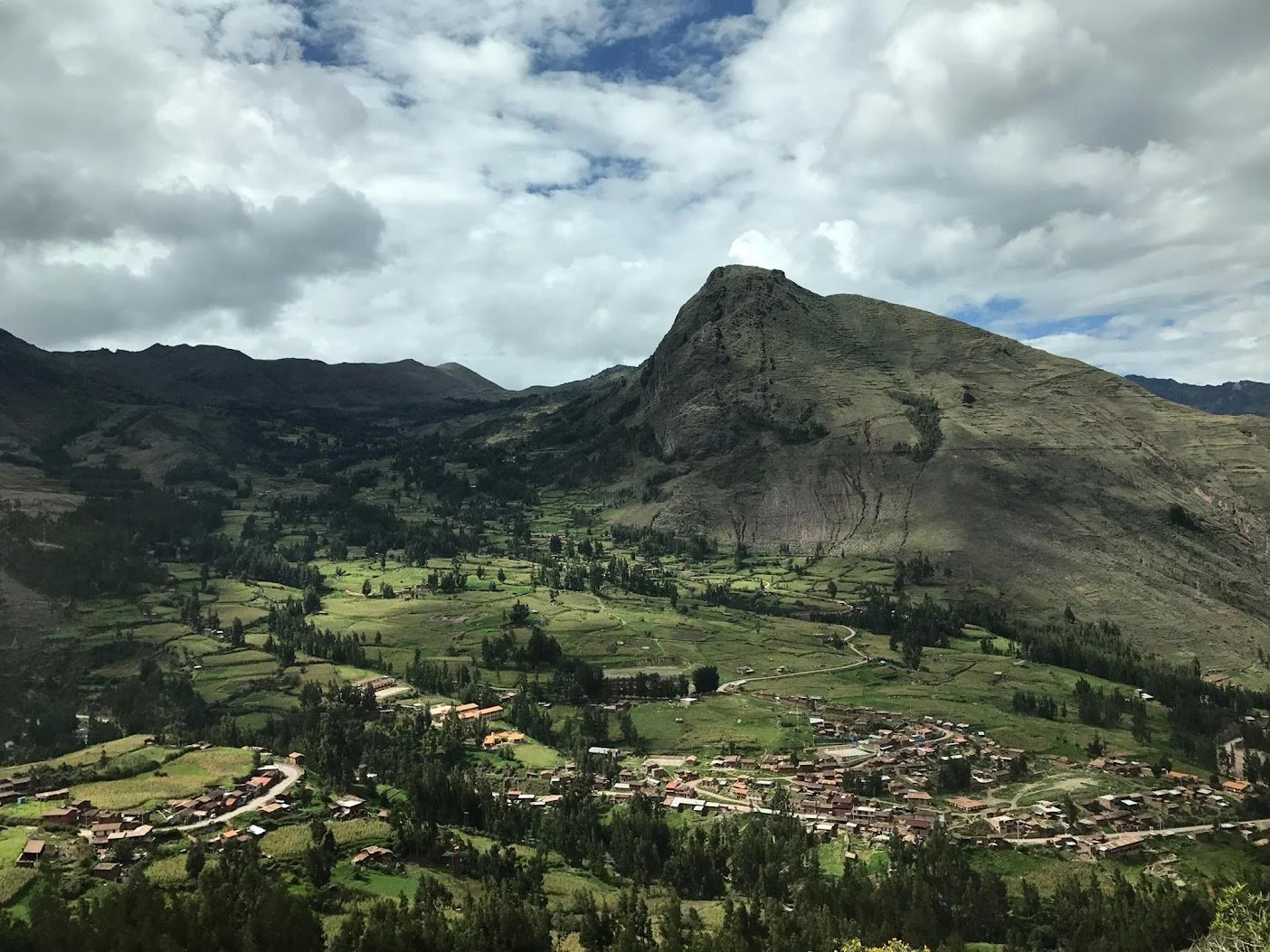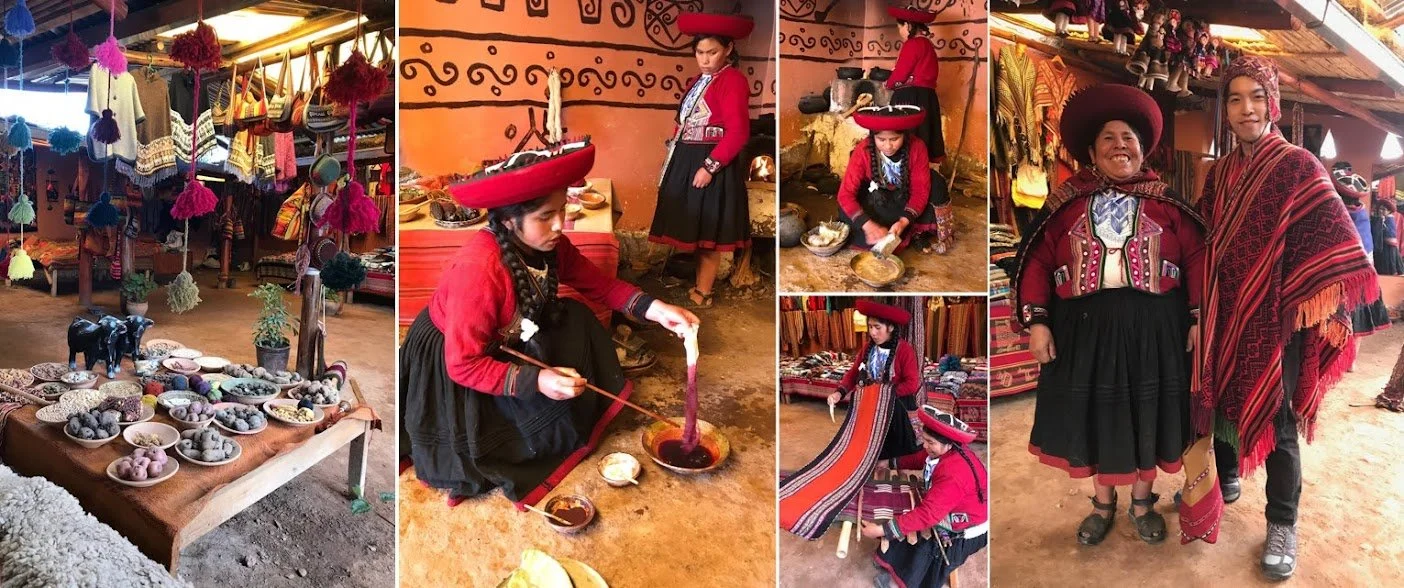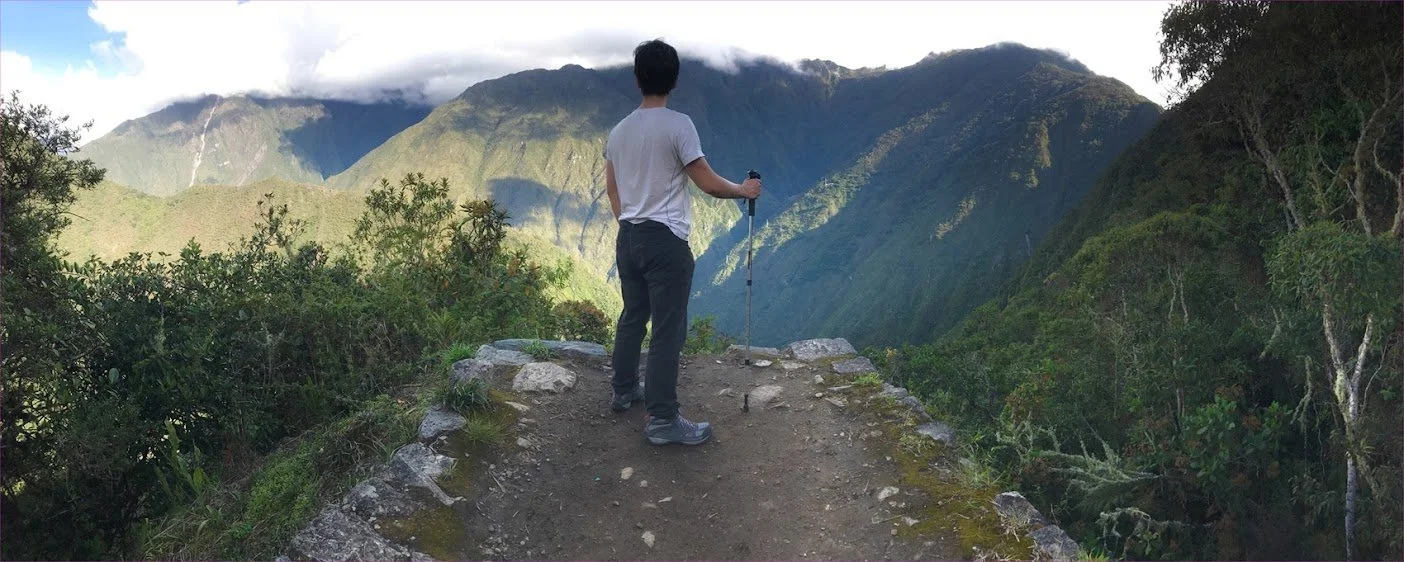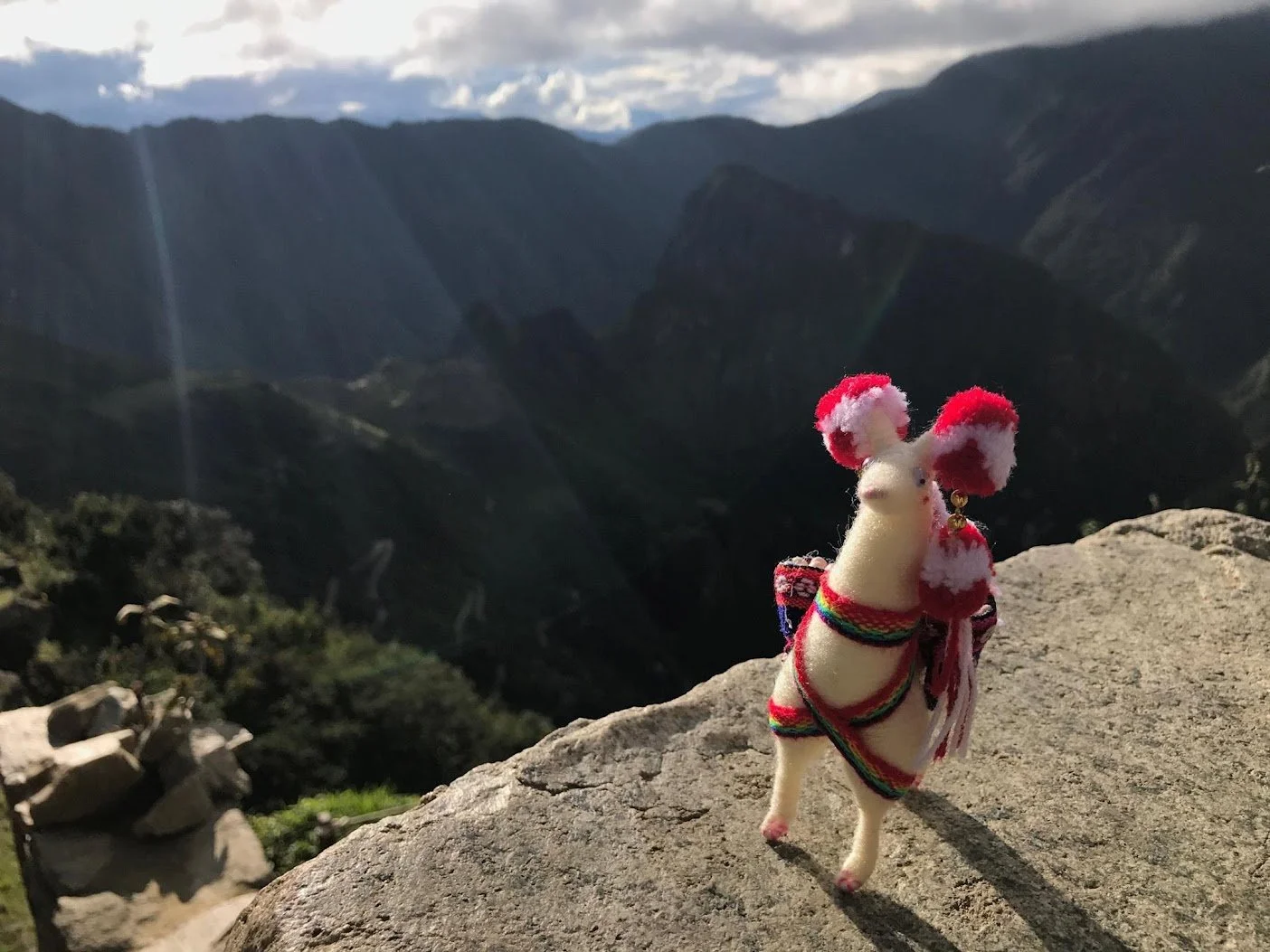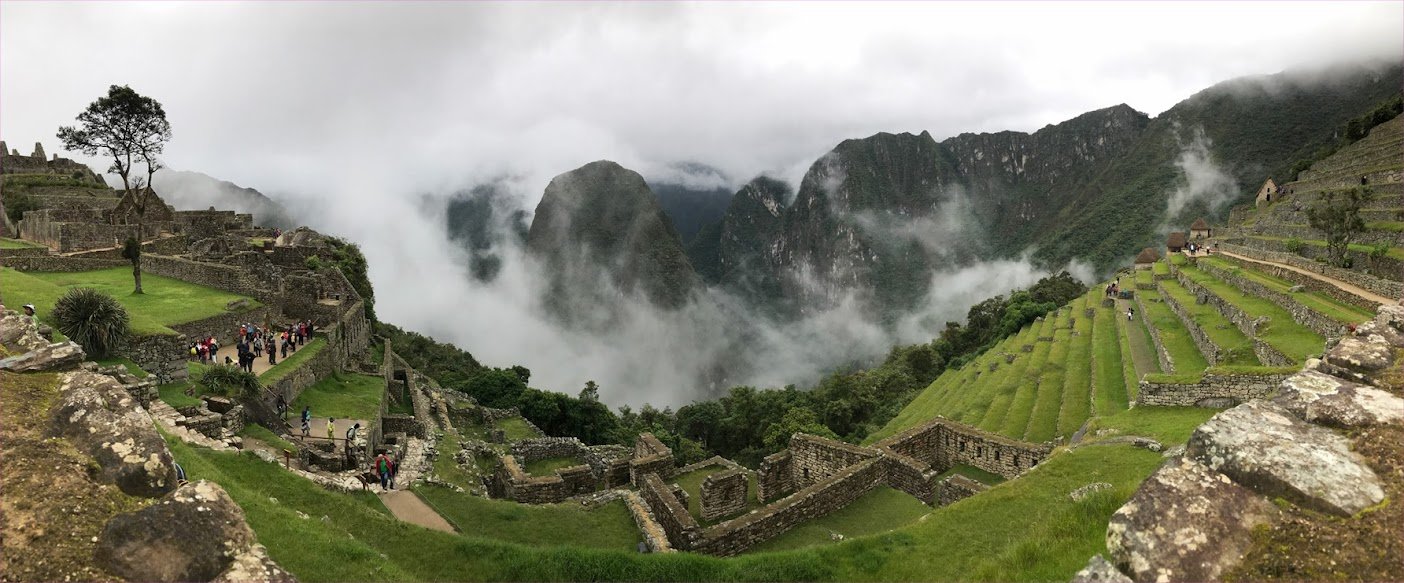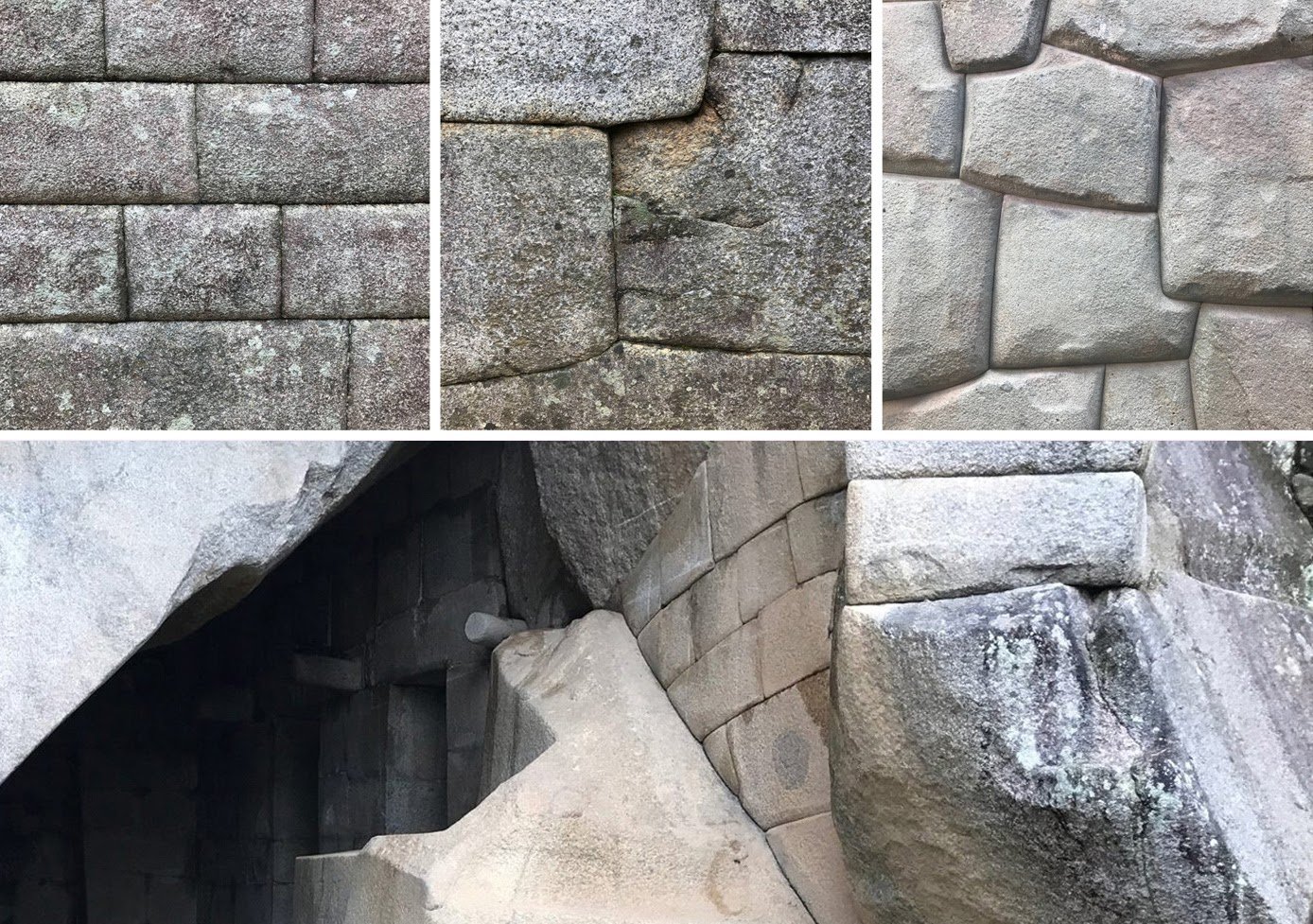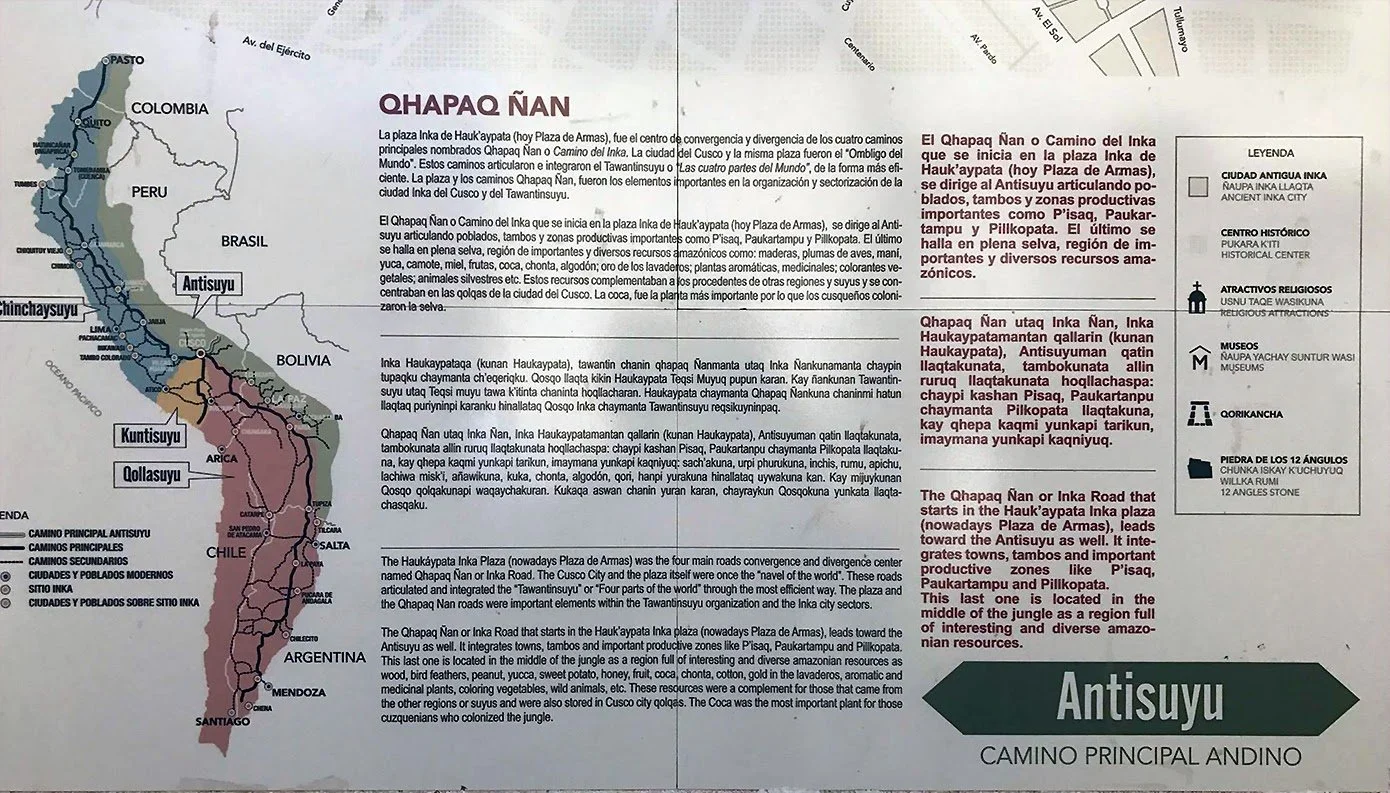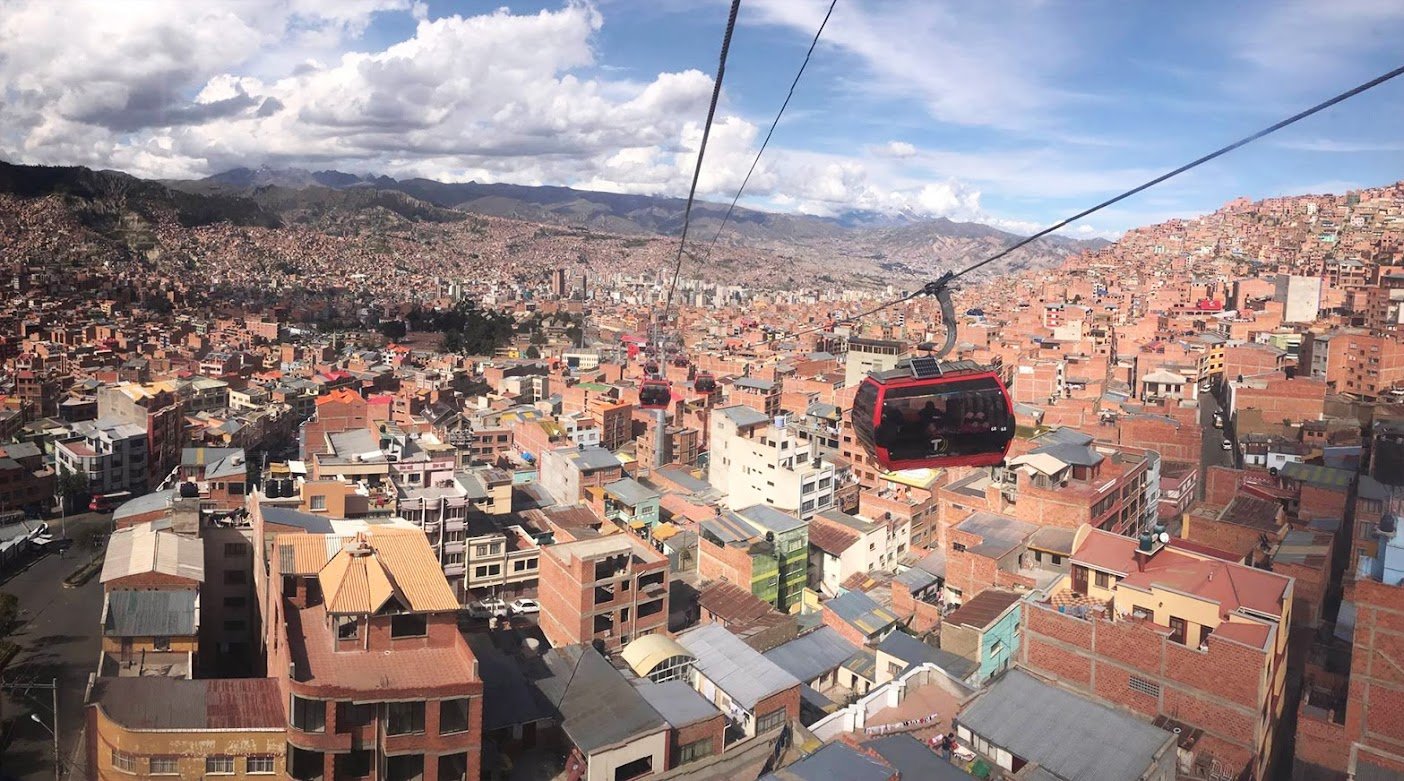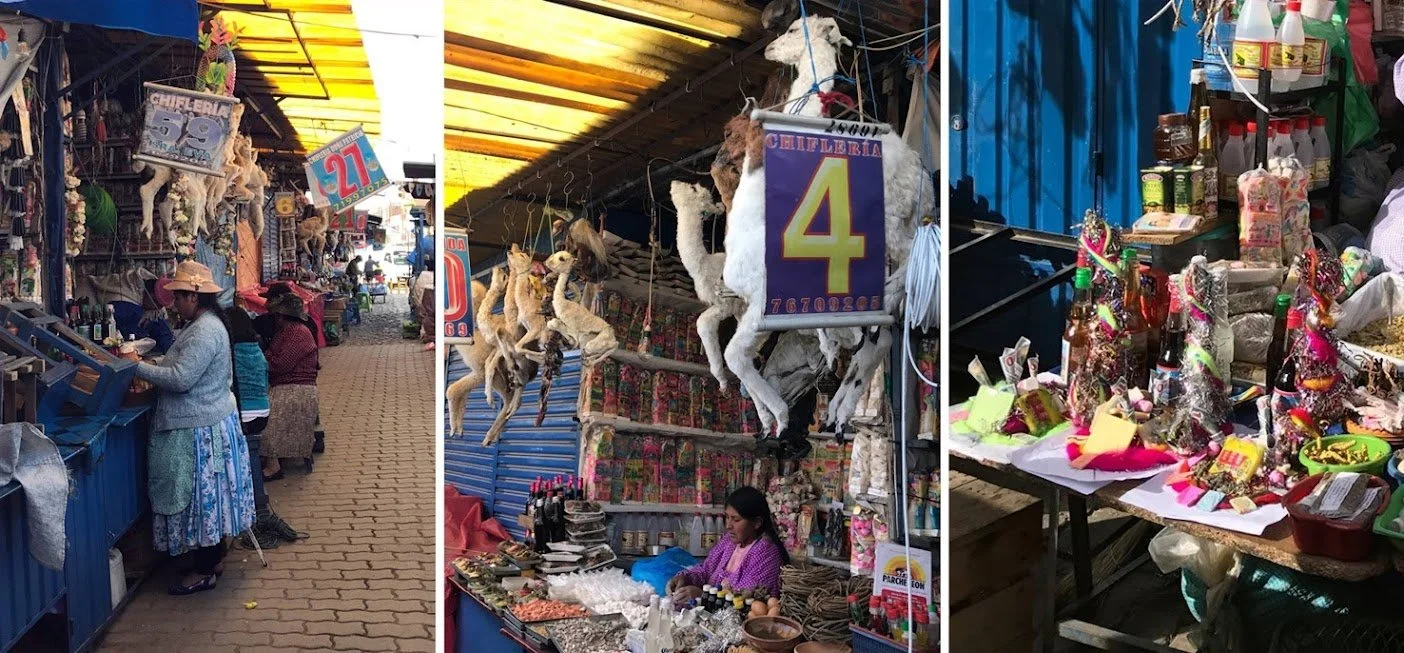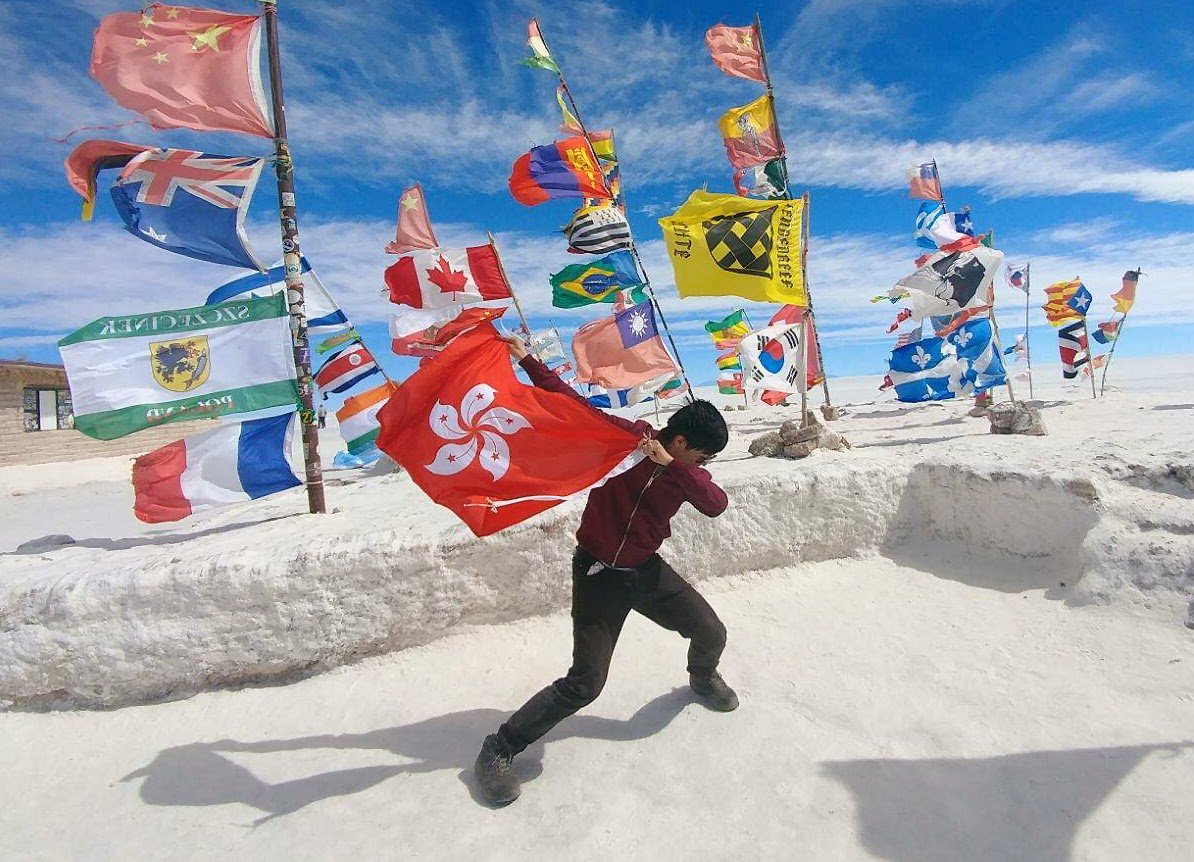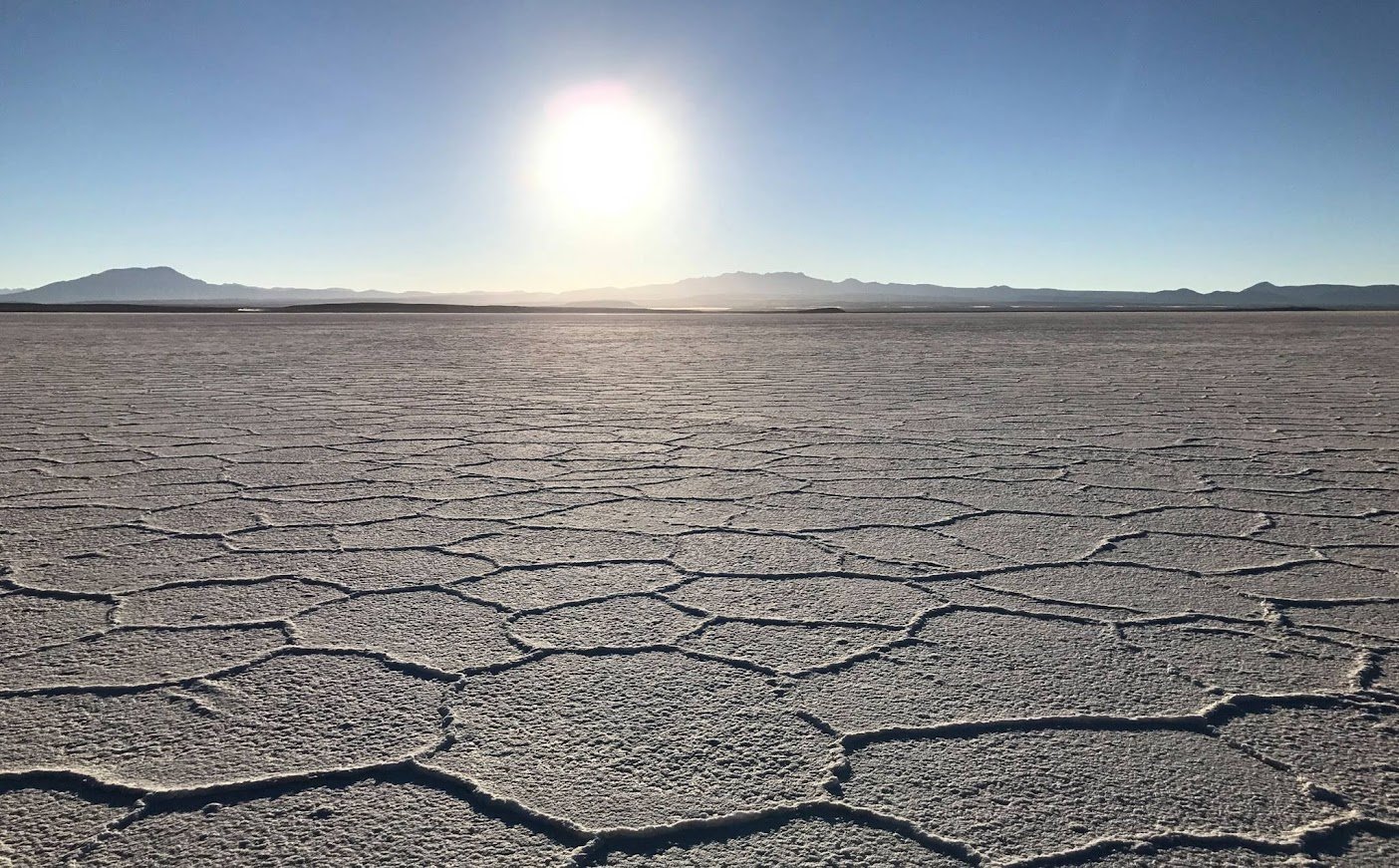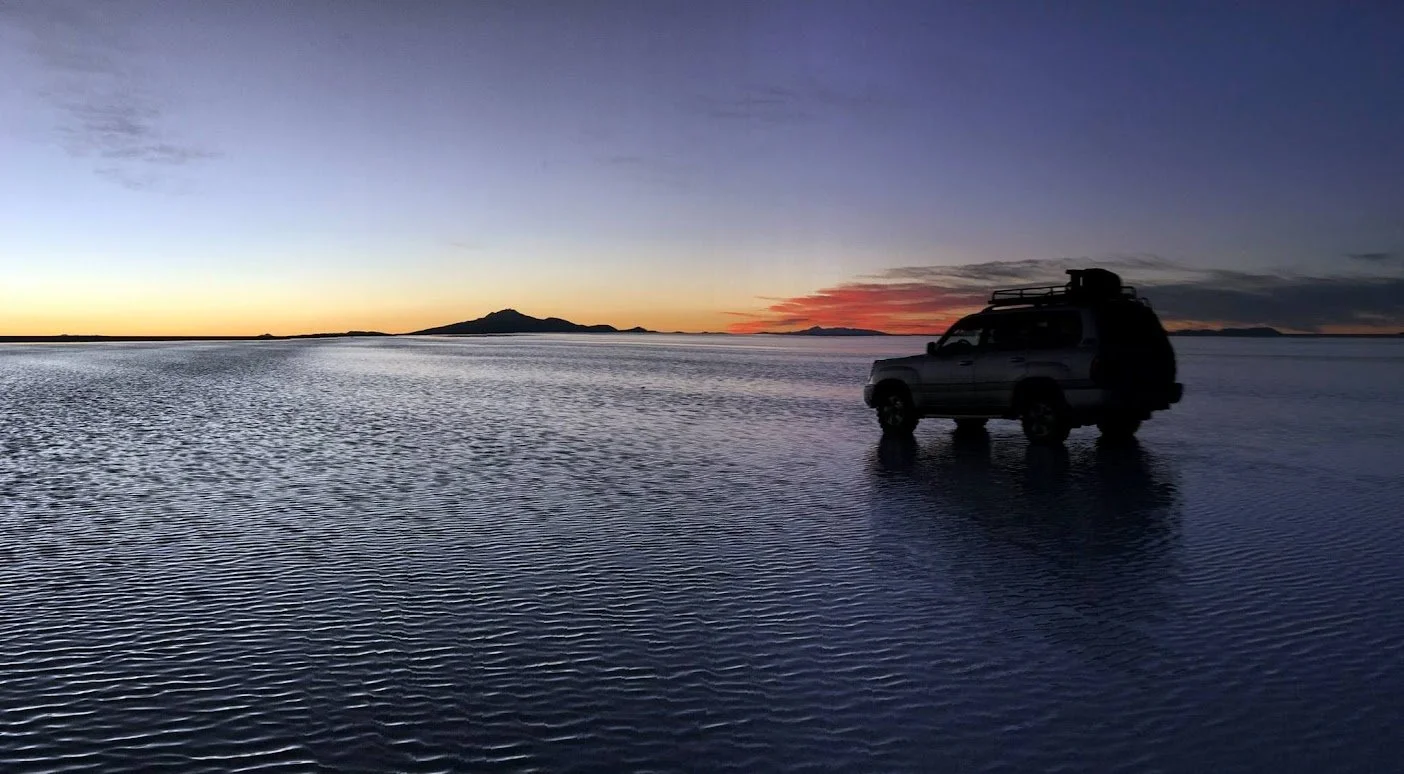Journey to the Land of the Incas
This past April, I embarked on a trip the the lands of the former Incan empires, traversing the mountainous Andean regions of Peru and Bolivia. I’d always wanted to go and explore Peru. I’d daydreamed of hiking the Incan trail to Machu Picchu, playing a guitar while riding a llama. So when my friend Whatsapped me from out of the blue telling me that he was planning a South American trip to Peru and Bolivia, I jumped on the chance. I’d previously gone with him to Cuba a few years back and apparently we were starting to have a Latin American guys’ journey thing going on. After a month of tedious planning where I used Evernote to list all our travel plans details, including lodging, tour receipts, and transportation, we were on our way. I packed light because of all of moving between venues we’d be doing. My first real backpacking trip!
Arrival in Peru
I arrived first in Lima in the early morning of good Friday, April 13. As such, most things were closed. Still I explore central Lima a bit as I had time before my friend arrived in the evening. As I went around Lima, I headed straight for the city center. This is usually where things of note are located in new cities. It was the Good Friday, so many of the roads were closed off. I noticed many people holding bundles of corn with a little Jesus figurine inside as they paraded into the church. A man also tried to sell me one but I told him I had no space in my suitcase. Though everything was closed, there were people everywhere. In the squares, sitting waiting for the churches to open. I explored the nearby area and the Chintown as well until the early afternoon before heading back to the hostel to wait for my friend to arrive and catch the flight to Cusco.
There is considerable Chinese influence in Peru. Clockwise from top left: Wong: previously the market leader in Peruvian supermarkets, it has steadily lost market share since being purchased by a Chilean conglomerate; Main street of Chinatown, Lima; dictionary entry for sillao “soy sauce” (pronounced see-yao), which comes from Cantonese for “soy sauce”, pronounced almost identically; arroz chaufa, or fried rice, complete with spicy sauce on crispy thingimabob; a chinese food advertisement from China Wok.
Sacred Valley of the Incas
After a midnight flight to Cusco, we landed, and immediately I felt lightheaded. Ah, the dreaded altitude sickness. I’d previously been to Denver, Colorado, which was 5,500 feet above sea level, but 11,000 feet above sea level, Cusco was twice that. All around the airport were advertisements for altitude sickness pills. Sorojchi, was the brand, and I would later learn Sorojchi was a Quechua word meaning altitude sickness. Clearly, a lot of tourists needed this. I ended up taking some of my friend’s pills and felt better, albeit for a slight numbness and tingly feeling in my extremities. My friend informed me that these were the side effects. As we arrived at around 5am, we explored the still slumbering city as the sky slowly lightened. Then we went to our tour’s office, and we set off to the sacred valley
As we descended from Cusco into the Sacred valley, we began to see the magnificent, lush green valleys and the densely populated towns below. Amidst the green of the trees there were large patches of blue. Eucalyptus trees, our guide had explained, imported from Australia to prevent soil erosion and now spread like a plague. “Too bad we didn’t import the Koalas”
A view of the Sacred Valley of the Incas
Our first stop was to see the camelids. I.e. Llamas, alpacas, and vicuñas, oh my! “When do I get to ride a llama?” I asked, as I excitedly fed some alfalfa leaves to a gently chewing llama. It turns out, llamas can’t really support a weight of a man, he explained, dashing my dreams of riding a llama into the setting Andean sun. The alpacas were so fluffy though.Our tour through the sacred valley of the Incas took us to many Incan buildings, small towns, and small towns built from Incan buildings. One of the most common sights were the terraced farming, which the Incans had used for farming and crop experiments. These were ubiquitous, in the middle of nowhere, or right next to towns.
The different elevations in Incan “crop laboratories” allowed them to experiment with crops that typically grow in different temperatures.
We visited a number of the valley’s towns. Pisac, Urubamba, Ollantaytambo. It was surprising how much traditional Incan culture was still preserved. Markets were open and flourishing and people still walked around in traditional garb. It was like a scene out of a period piece.
An Incan town with more Colonial Spanish architecture.
The “living” Incan town of Ollantaytambo as seen from the Sun Temple.
Marketplaces sell all manner of goods and merchants often haggle. The locals sometimes barter, forgoing currency altogether.
These furry little alpaca wool toys were everywhere in Peru and Bolivia.
We also got a healthy amount of demonstrations of indigenous wool dyeing techniques. I bought my own 100% alpaca wool poncho from a seller in Chinchero, as well as a nice blanket. Here bargaining is important, and despite my Chinese heritage, I was a little rusty.
A Chinchero market where traditional knowledge of dyeing, spinning, and knitting alpaca wool is preserved and sponsored by the government. I got my 100% alpaca wool poncho here.
We also ate some pretty exotic food here. Guinea pigs and llama/alpaca meat! Apparently guinea pig, or cuy as they call it here, is raised primarily for food. Every year Peruvians eat 65 million guinea pigs. Yes, the cute furry creatures we keep as pet were first domesticated here in the Andes (not Guinea) for food by the Incas. Guinea pig kind of tastes like rabbit or dark chicken meat. Llama and alpaca meat is pretty common too, but not particularly distinctive tasting.
Left: how guinea pigs are raised; Right: how guinea pigs are cooked “al horno”. Qué rico!
Machu Picchu
Next up was the fabled Machu picchu. Its green terraced slopes and immaculately chiseled stone walls nestled in verdant green mountains is a ubiquitous sight in literally any travel site. We took Llama Path’s Short Inca Trail tour, which consisted of one day of hiking the Inca Trail, followed by a night in a cozy hotel in the nearby town of Aguas Calientes, and followed by a in depth tour inside Machu Picchu the next day.
We took the train from Ollantaytambo to km 106 to start the hike. As the train descended from the Sacred Valley towards the Machu Picchu region, we noticed the drier vegetation turn into more jungly scenes that was more familiar to Hongkongers like my friend and me. This region was the cloud forest, a forest that is usually covered by cloud or fog, which provides a consistent source of moisture.
Looking out over the Inca Trail mountains near Machu Picchu
As we hiked up the mountain, we stopped along more incan ruins and picturesque views. One of these was the very steep set of stairs that the local guides had nicknamed Gringo Killer. The combination of the steep hike, the uneven rocks, and the high altitude (although at 8000 feet, Machu Picchu was the lowest point of our main destinations).Around mid afternoon, we reached Inti Punku, the Sun Gate. It was a spectacular sight, looking out over the valley and in the distance seeing Machu Picchu. Inti Punku itself was important. Every Summer Solstace (Dec 21) the Sun would shine through the sun gate into a temple down in Machu Picchu, indicating Incan New Year.
I brought my llama toy for a shot like this
We continued on down toward Machu Picchu and around 5pm we arrived on the overlook point. The site had closed and was empty of people. Our guide shouted off to someone in Spanish “we’ll just take a little photo and we’ll be gone!” before quickly coming back and motioning us to go to a good photo spot. “Quickly, we’re not supposed to be standing in this section. I’ll take a photo of you.” I took out my poncho, which had weighed me down the whole trail (as well as a 2.5 litre bottle of water, which I hadn’t even opened because I’d brought too much water). I put on the poncho and our guide helped me take the photo I wanted.
Carrying my heavy poncho was totally worth this shot
We took a few more photos before quickly rushing off to the bus station to take the last seats on what turned out to be the last bus of the day. Had we missed it, we would have had to hike another two more hours in the setting sun down to the town of Aguas Calientes. Luckily we made it.El Dorado’s streets may have been paved with gold, but Aguas Calientes’ streets were lined with restaurants. Aguas Calientes was very much a tourist hub. Strangely enough, all the restaurants seemed to have basically the same menu. This would turn out to be a common thing in most of Peru.The next day we took the bus back to Machu Picchu and our guide described in details Incan life and how this place was built. Whereas the sky was clear the night before, it was drizzly and foggy when we went. This actually was perfect because the swirling fogs lended an atmospheric mystique to this already breathtaking location. We learnt that the Incans did not have currency, but nonetheless citizens paid taxes to the government. They did so by working on projects for years at a time before being allowed to go back to their homes and living peacefully for the rest of their days.
The immaculately-designed streets and terraces of Machu Picchu even contained drainage systems.
Our guide explained that Machu Picchu had been built in “only 50 years!”. My friend and I both tried to feign astonishment the speed. Looking back, I guess in those days that was a feat, but especially so because of the material Machu Picchu was made of: finely carved stones that fit each other like a glove. These stones often were irregular sizes, but fit without gaps. Most of these come from the quarry at the top of Machu Picchu city.
That afternoon, we took the train back from Aguas Calientes to Ollantaytambo, and then another guide from Llama path took us back to Cusco. I learnt that this guide who was only 20 had actually only spoken Spanish for about 5 years. Like our other guide, he was born into a Quechua family and had spoken Quechua at home. I thought it was cool to see so many direct descendants of Incan in Peru and Bolivia where they, unlike most other Latin American countries, constitute the majority of the population.
A Spanish, Quechua, and English sign in Cusco. Quechua is an official language in Peru. As a linguist, I am quite excited about this.
Cusco
Cuzqueño architecture mixes colonial Spanish and traditional Incan architecture, and is very hilly.
We stayed for a couple days in Cusco, just relaxing after the hectic Sacred Valley and Machu Picchu leg of our journey. It was very much a tourist-driven city. We joined a local walking tour (free, but tips are strongly encouraged) one afternoon, taking us through Cusco’s gently hilly topography and sometimes steep roads. Cusco was the capital of the Incan empire and all roads led to Cusco. You can still see much of the Incan stone architecture in many of the buildings here. To retain the atmosphere of the place, certain modern amenities like subways or large cars, or high rises are strictly restricted or outright prohibited. Some locals take advantage of the tourism by dressing in traditional garb, walking an alpaca around, and asking for tips from tourists taking photos. I found out when I got yelled at by an old lady when I took a photo with an alpaca which had been parked outside a store.
Lake Titicaca, Puno, and Copacabana
Our next stop was Puno near Lake Titicaca. We took the Peru Hop / Bolivia Hop bus down from Cusco. These buses were good because you could (as the name suggests) hop on and hop off on the various stops along the way. We started from Cusco, stopped in Puno for a night, got on the next day, crossed the border to Bolivia, stopped in Copacabana for a while, before finally continuing on to La Paz. You tend to see some of your fellow passengers in the cities you visit as there is really only so many places people visit in Bolivia. For us, two groups of fellow Hong Kongers on the bus the first night. We bumped into one of the groups, a group of six, no less than four times in three different locations in the next week.
Puno was a generic small sized Peruvian town. What was more interesting, however, was the traditional communities in the lake near Puno. We took a boat out to the Uros floating islands. These islands were made of dried reed and bits of soil. Each island is made with a dirt anchor with piles of piles of dried reeds. They generally last 30 years before a new island must be made. Walking around these islands was a unique experience because every step seemed to compress the biodegradable ground a little.
Clockwise from top left: A view of an Uros island; the insides of a house; a model of how Uros islands are constructed.
La Paz, Ciudad Maravillosa
The city of La Paz (full name Nuestra Señora de La Paz, trans: Our Lady of the Peace) one of the Seven Wonder Cities of the world. It sprawls out over the hills and mountains and even has a cable car system to take people from one part of the city to another. This doesn’t quite make up for the lack of a subway system, but it definitely is an interesting way of getting around. Our hostel owner explained to us that the reason La Paz doesn’t have a subway system is due to the many underground rivers it has—building a subway would be too complex. What La Paz does have is an endless supply of minivans that take you to various parts of the city. Apparently these minivans make up about 70% of the traffic, and boy is there traffic. It’s almost as bad as major cities like New York and Hong Kong.
Located in the Andes, 12,000 feet above sea level, La Paz is one of the highest capitals in the world. Naturally, cable cars, or the “teleferico” is one of the modes of mass transportations that local Paceños take around.
About 70% of the vehicles in La Paz are minivan buses.
What I really enjoyed about La Paz was all the local culture. The city is bustling with life and curiosities of all kind, from the numerous book stalls, the witches market, the ubiquitous food stalls. Everywhere you see the locals, or Paceños (people of La Paz), hustling. One sight you’ll see are the cholitas, in traditional Spanish clothing and the bowler hats, or bombín as they are called. I even visited a museum dedicated to these Aymara women.
I really enjoyed the food, even though it may have contributed to my week long stomach ache. Pique macho, silpancho, trancapecho (I’d never seen rice in sandwich before!), and the ubiquitous salteñas, the Bolivian take on Latin American empanadas. The food was very cheap, averaging $4 USD a meal. At one point I even had a hamburger for the equivalent of $0.73, and a 400ml bag of water (yes bag) for $0.07. The bag of water tasted plasticky however..
Clockwise from top left: a cholita wrestler receives the crowd’s cheers; a brass instrument performance; people prepare traditional festival garments; a parade scene from the cable car
Traditional beliefs are still widely practiced. Our guide showed us the cemetery where the normal somberness of a resting place for the dead was replaced with peculiar gifts where loved ones had brought things that the deceased had enjoyed in life, so that they could continue enjoying it back in the afterlife. Our guide also showed us the famous Witches’ market, where dried llama foetuses hung from every stall, and occasionally were wrapped up in shiny tin foil and colourful paper to prepare for burning.
Llama foetuses hang from every stall in the witches’ market. The foetuses, like most goods here, seem to serve as offerings.
The Bolivian Salt Flats
We took the night bus from La Paz to Uyuni. The travel buses are a typical experience of the South American trip due to the high cost of trains. I couldn’t sleep all night on this particular bus ride, due to my stomach ache, despite my friend having booked a higher end bus. To make matters worse, we had to stop in the middle of nowhere at 3am when nature called because these travel buses don’t allow you to use the toilet to go number two. Luckily by now I’d learned the importance of bringing toilet paper, and my stockpile had accumulated enough. It was going to be a long night.
We arrived in the town of Uyuni in the morning. It was very different from La Paz. A mining town near the salt flats, everything was flat and dusty. Despite the salt flats being the first thing people think about when they hear Uyuni, the town’s main industry is actually mining, what with an estimated 50-70% of the world’s lithium deposits being located in this region. But behind that was definitely tourism. The town is practically empty during the day when the tour groups leave.
We had a private tour both for the day till sunset, and nighttime. The Salar de Uyuni has several distinct locations and sites, and we were going to visit most of them that day. Our first stop was the train cemetery, a set of abandoned, rusting trains and traintracks whose harsh look in the middle of the desert made for some interesting photo and posing opportunities.
One of the many abandoned trains in the Train Cemetery.
Next was one of the many salt buildings that had been erected. We had lunch here on a table of salt, sitting on a salt chair (not salt throne GoT fans!), on a ground of salt, under a salt roof. It was quite surreal. Apparently they stopped using it because of lack of piping. Also apparently licking the walls is discouraged (read: prohibited).
There is so much salt that you can build entire buildings out of it.
I brought the Hong Kong flag to dab with.
After lunch, we drove to the Incahuasi “island”. This was a raised area of land amidst the salt flats where cactuses and other small arid plants grow. Apparently this island had actually been an island at some point, and the salt flats had been a lake. This is why there was coral in many parts of the island.
Looking out from the Incahuasi island really feels like looking out from an island into the sea… except the sea is all salt, no water.
Our guide said the shapes are formed by the curvature of the Earth. I believe the molecular structure of salt also plays a part.
Finally as the sun set, we set off to the shallow water plains, or the Mirror of the Sky, as it is advertised in Asia. This was the highlight of our whole trip. The setting sun set the sky ablaze in a sea of colours and melted into the confluence of the water’s edge. We waded about in the wellington boots the tour provided, drinking in the absolute beauty that nature conspired to create. Later on in the night we would be coming back to get nighttime shots with the starlit sky.
I snapped a picture of my friend wading across the water. It turned out quite nicely.
Wind causes gentle ripples on the shallow waters
After the sunset, we went back, ate, slept and woke up again at 3 to meet for the night and sunrise tour. We drove out again, and after fumbling around a bit with the cameras and fearing we might’ve gotten frostbite from sitting outside too long at 20 F / -7 C, we managed to get the camera adjusted correctly for nighttime photography. Luckily my friend had taken a basic class in photography otherwise we would’ve come away with nothing (well, no photos but still an amazing experience). We took turns standing still for minute long exposures to get enough light for our photos.
I can see why they call this the Mirror of the Sky
Lima Returning to Urban Sprawl
At this point, the major new areas of our trip were over. I was already exhausted, but my friend still had a week left, which he would spend in Chile after we part ways. I went back to La Paz for a day leisurely exploring and then Lima for a day and a half. I stayed in the Miraflores district of Lima, which was very much an expat and touristy urban area. I shopped a bit, and enjoyed the really architecturally interesting Larcomar mall. This seemed to be what high end Latin American luxury looked like. It was a nice relaxing denouement to a trip, and I needed it. After all, I’d be back in the office in two more days.
Larcomar Mall in Miraflores, Lima, is an upscale mall built into the side of a cliff overlooking the Pacific Ocean



